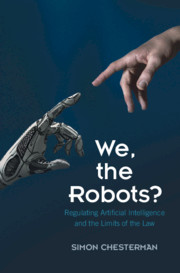8 - New Institutions
from Part III - Possibilities
Published online by Cambridge University Press: 15 July 2021
Summary
The answers that each political community finds to the law reform questions posed by AI may differ, but a near-term threat is that AI systems capable of causing harm will not be confined to one jurisdiction – indeed, it may be impossible to link them to a specific jurisdiction at all. This is not a new problem in cybersecurity, but different national approaches to regulation will pose barriers to effective regulation exacerbated by the speed, autonomy, and opacity of AI systems. For that reason, some measure of collective action is needed. Lessons may be learned from efforts to regulate the global commons as well as moves to outlaw certain products (weapons and drugs, for example) and activities (such as slavery and child sex tourism). The argument advanced here is that regulation, in the sense of public control, requires active involvement of states. To co-ordinate those activities and enforce global ‘red lines’, this chapter posits a hypothetical International Artificial Intelligence Agency (IAIA), modelled on the agency created after the Second World War to promote peaceful uses of nuclear energy, while deterring or containing its weaponization and other harmful effects.
Keywords
- Type
- Chapter
- Information
- We, the Robots?Regulating Artificial Intelligence and the Limits of the Law, pp. 195 - 223Publisher: Cambridge University PressPrint publication year: 2021

